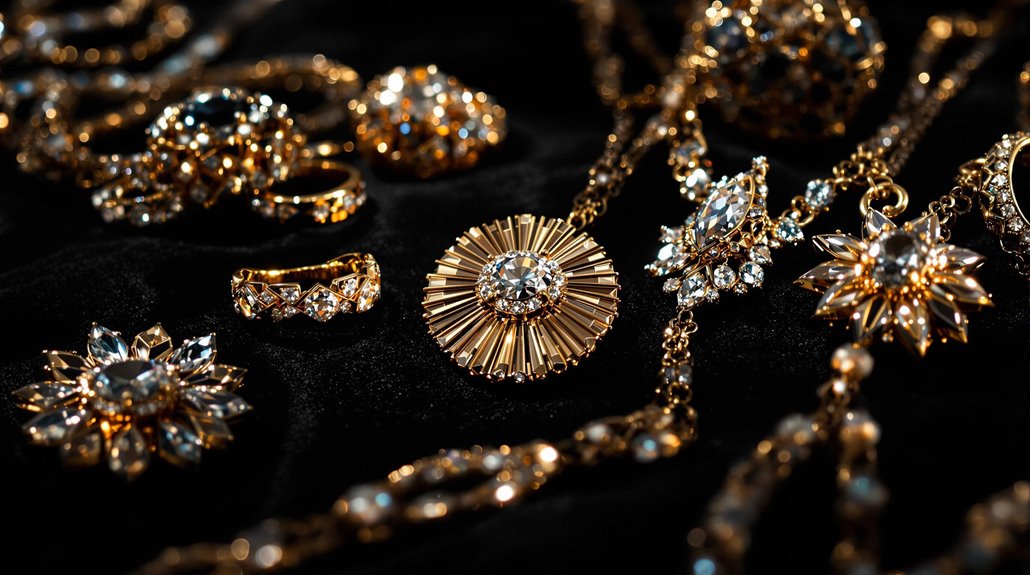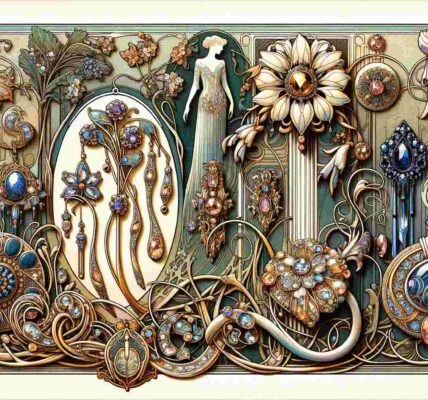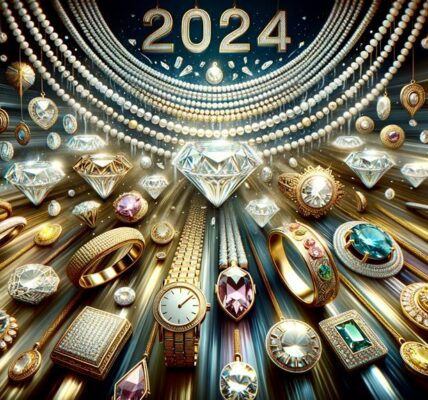Laura Vann’s eponymous jewellery brand, established in 2013, masterfully reinterprets Art Deco aesthetics for contemporary audiences through geometric precision and sustainable practices. Based in Britain, V by Laura Vann combines traditional craftsmanship with modern sensibilities, utilising recycled silver and cutting-edge design techniques to create pieces that honour the movement’s heritage. Stocked in prestigious retailers like Selfridges and Liberty, the brand’s distinctive aesthetic bridges classical Art Deco elements with current trends, offering a glimpse into luxury’s sustainable future.
Article Contents
Main Highlights
- Laura Vann established her British jewellery brand in 2013, focusing on reinterpreting Art Deco aesthetics for contemporary consumers.
- The brand combines geometric precision with streamlined elegance while maintaining sustainable practices through recycled silver usage.
- Vann’s designs reflect Art Deco’s signature elements like strong vertical lines and architectural inspiration in modern, wearable pieces.
- The brand has achieved recognition in prestigious retailers like Selfridges and Liberty for its distinctive blend of heritage and modernity.
- Vann successfully preserves Art Deco’s characteristic luxury while incorporating sustainable materials and contemporary design principles.
The Art Deco Revival: A Modern Renaissance
Though the original Art Deco movement of the 1920s and 1930s left a lasting mark on design history, its contemporary revival represents a fascinating confluence of nostalgia and innovation in the modern aesthetic setting.
This resurgence, evident in urban architecture and interior design, reflects a collective yearning for the glamour and optimism that defined the Roaring Twenties. The movement’s emphasis on rich materials and brass continues to inspire luxury in contemporary spaces. The style’s distinctive sunburst and ziggurat motifs remain quintessential elements of modern Art Deco interpretations. The vibrant colour palette includes shades like mustard yellow and emerald.
In today’s design environment, societal nostalgia has sparked a renewed appreciation for Art Deco’s bold geometries and luxurious materials, as modern aesthetics have adapted these elements for contemporary sensibilities.
The style’s cross-societal influences, from ancient Egyptian motifs to industrial elements, provide designers with an abundant vocabulary for creating spaces that bridge historical grandeur with present-day functionality, particularly in metropolitan centres where architectural preservation meets forward-thinking design solutions.
Crafting Timeless Elegance: V by Laura Vann
Among the most compelling manifestations of Art Deco’s contemporary renaissance stands V by Laura Vann, a British jewellery brand established in 2013 that masterfully reinterprets the movement’s geometric precision and streamlined elegance for modern sensibilities. Drawing from the movement’s dedication to functional objects, the brand seamlessly merges artistic expression with wearable design. With an expanding presence in prestigious retailers like Selfridges and Liberty, the brand has garnered recognition for its distinctive aesthetic.
The brand’s commitment to enduring design manifests through its distinctive approach to vintage aesthetics and geometric patterns, offering a sophisticated substitute to fast fashion. The brand’s practice of using recycled silver demonstrates its dedication to sustainable production methods. Taking inspiration from pioneers like Art Smith, the brand incorporates fluid forms that honour historical craftsmanship while embracing contemporary aesthetics.
V by Laura Vann’s dedication to timeless luxury is evident through:
- The incorporation of Art Deco’s symmetrical motifs in contemporary jewellery pieces
- A focus on sustainable craftsmanship through refurbishment services
- The creation of demi-fine collections that balance accessibility with refined artistry
Through this thoughtful fusion of historical inspiration and modern execution, V by Laura Vann continues to exemplify the enduring appeal of Art Deco’s design principles.
Blending Heritage With Contemporary Design
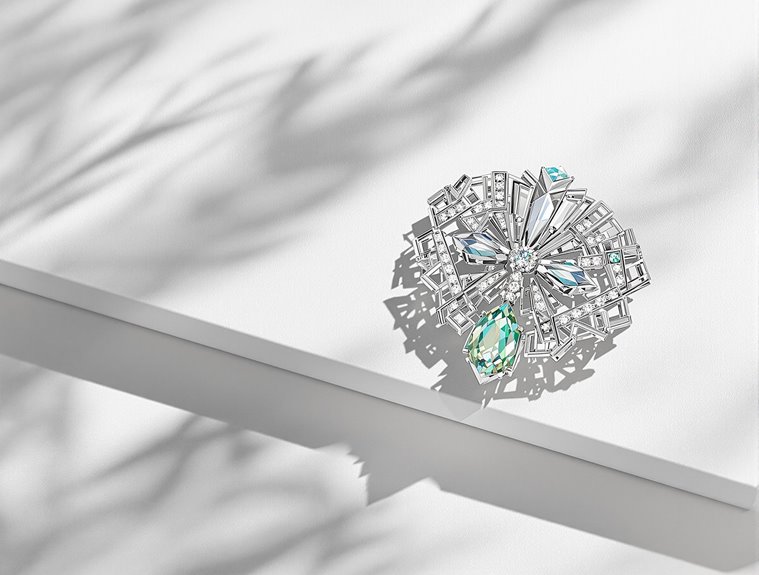
The seamless integration of Art Deco’s heritage with contemporary design principles represents one of the most significant challenges in modern architectural and interior aesthetics. Through careful heritage integration, designers are discovering groundbreaking ways to preserve Art Deco’s geometric grandeur as they welcome contemporary aesthetics, creating spaces that honour both tradition and modernity. This delicate balance manifests through sophisticated material choices and thoughtful design elements. The incorporation of high-gloss surfaces and sleek finishes provides a dramatic modern counterpoint to traditional Art Deco elements. The integration of these designs requires societal value engagement to ensure the preservation methods resonate with contemporary community needs. Drawing from the project’s focus on critical art-historical research, designers are employing machine learning prototypes to analyse historical patterns and inform modern interpretations.
| Element | Heritage Aspect | Contemporary Interpretation |
|---|---|---|
| Materials | Marble, Bronze | Polished Steel, Smart Glass |
| Patterns | Sunbursts, Zigzags | Minimalist Geometry, Digital Prints |
| Lighting | Crystal Chandeliers | LED Installations, Backlit Panels |
| Finishes | Gold Leaf, Chrome | Nano-coatings, Metallic Films |
| Colour Palette | Deep Jewel Tones | Monochromatic Schemes, Metallic Accents |
The Enduring Appeal of Art Deco Jewellery
Marked by geometric precision and groundbreaking craftsmanship, Art Deco jewellery continues to captivate collectors, designers, and enthusiasts well into the 21st century, owing to its distinctively bold aesthetic and revolutionary approach to design. The movement’s strong vertical lines were often inspired by contemporary architecture, lending a dramatic flair to each piece. The introduction of small brilliant-cut diamonds reflected the shift away from large statement gemstones of previous eras. The discovery of King Tutankhamun’s tomb in 1922 sparked an explosion of Egyptian-inspired motifs in jewellery design.
The societal influence of Art Deco extends far beyond its 1920s and 1930s peak, with contemporary designers drawing inspiration from its signature elements.
Three defining characteristics that solidify Art Deco’s enduring appeal:
- Creative use of geometric patterns and unconventional stone cuts
- Sophisticated combination of precious and experimental materials
- Transformational design techniques, including invisible settings and convertible pieces
Through its perfect marriage of modernity and timeless elegance, Art Deco jewellery represents more than mere ornamentation—it embodies the spirit of creativity and independence that defined an era of unmatched social and artistic freedom.
Sustainable Luxury in Modern Interpretations
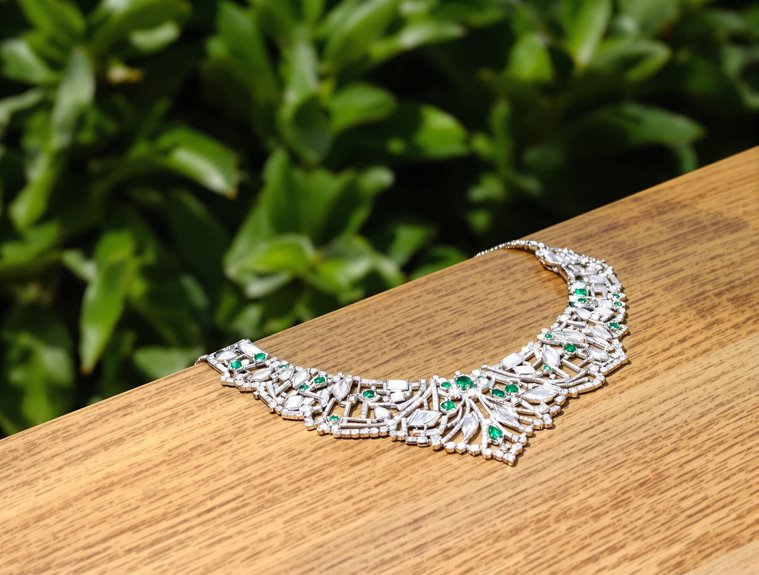
Contemporary interpretations of Art Deco’s luxurious aesthetic have evolved to embrace environmental consciousness, bridging the movement’s inherent opulence with modern sustainability imperatives.
Through sustainable sourcing and eco-conscious craftsmanship, designers are reimagining the movement’s signature elements using reclaimed materials and cutting-edge technologies. The incorporation of heirloom-quality pieces ensures lasting beauty while reducing the need for frequent replacements.
In today’s market, recycled metals gleam alongside locally sourced stone, as bio-based polymers replace traditional plastics in decorative elements. Following current trends, white gold metals remain a top choice for modern Art Deco pieces, selected by 39% of design enthusiasts.
Forward-thinking spaces now incorporate smart systems and energy-efficient lighting solutions, preserving Art Deco’s trademark glamour whilst reducing environmental impact. Natural lighting and strategic mirror placement enhance illumination whilst reducing energy consumption.
3D modelling tools facilitate the creation of intricate architectural patterns whilst minimising material waste in production.
From historical renovations to modern residential projects, this sustainable approach transforms the movement’s characteristic luxury into an environmentally responsible design philosophy, proving that opulence and ecological mindfulness can coexist harmoniously in contemporary interpretations.
